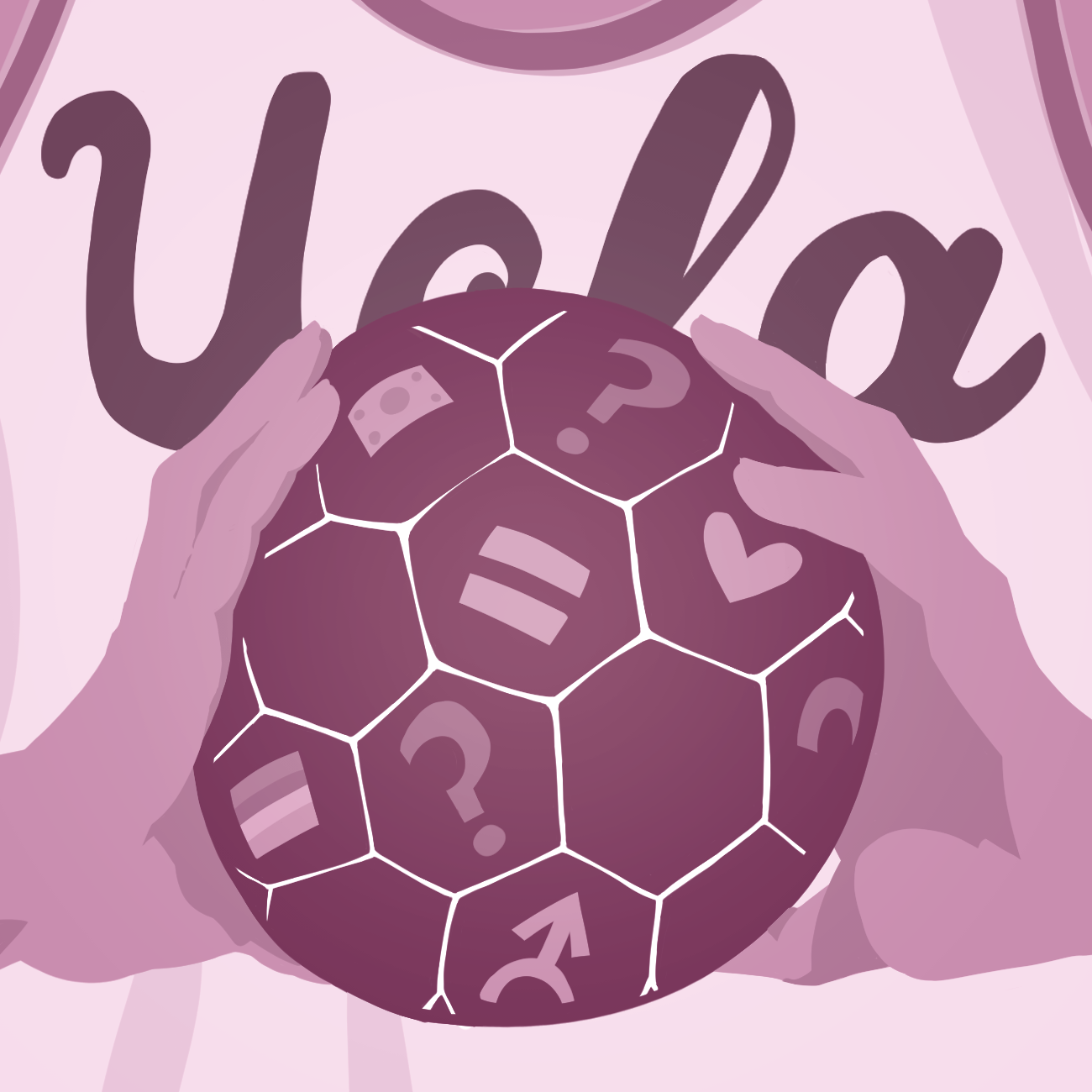The Quad: U.S. World Cup win gives platform for women to share goal of level playing field

(Bridgette Baron/Daily Bruin)

By Veronica Fernandez De Soto
July 15, 2019 4:22 p.m.
“I believe that … women will conquer more than just the soccer field,” declares Nike’s new advertisement campaign supporting the United States Women’s National Soccer Team. On July 7, the team did just that.
The United States beat the Netherlands 2-0 to secure its fourth women’s World Cup title, but spectators weren’t done shouting after the match concluded. Long after the U.S. victory, the crowd’s chants echoed through France’s Stade de Lyon, vehemently demanding equal pay.
Summer 2019 has been the season of women in sports, with the USWNT, UCLA softball and UCLA women’s soccer teams successfully representing the United States internationally.
As the stadium lights illuminate the pitch, they also help to broadcast issues of gender wage gaps, LGBTQ-inclusivity in sports, stereotypes regarding female athletes and other important social issues.
By the Numbers
This year’s World Cup has drawn in record-breaking ratings worldwide. According to The Economist, England’s semifinal match was the most-watched TV program of the year in Britain, while France’s quarterfinal match was also the most-watched TV program of the year in France.
Similarly, in the U.S., ratings for the 2019 Women’s World Cup were 20% higher than those for the 2018 men’s final.
The Fédération Internationale de Football Association – the body overseeing international soccer worldwide – estimated that this year’s Women’s World Cup drew in 1 billion viewers for the first time since the tournament was first held in 1991.
According to The Economist, the increase in worldwide viewership can be attributed to an increase in the quality of playing and to the amount of money that has been put toward the tournament, especially in sponsorships.
A Long-Drawn Match For Equality
While there’s still a long, winding road of challenges women in sports will face, the tournament held this summer stands in stark contrast to the origin of the Cup, first held in China in 1991.
According to National Geographic, the disparities between women’s and men’s soccer teams were blatantly representative of gender discrimination. Women dealt with hand-me-down uniforms from the men’s team, unlivable wages of $10 a day and regulations dictating that they use a lighter ball than men’s teams.
The U.S. Women’s National Team won the 1991 World Cup, an accolade that was barely covered by the media. Twenty-eight years later, the team has done it on multiple occasions. Not only did they win the cup in 1999, but they have consecutively been victorious in the 2015 and 2019 tournaments.
However, this year’s victory stands in an undeniable unlikeness to the one in 1991. This summer, the four-time champions have dominated the media with bold political statements, advertisements and the star power of faces such as Megan Rapinoe and Alex Morgan.
In fact, the Wall Street Journal recently reported the women’s national team has been out-earning the men’s national team – which didn’t even qualify for the 2018 World Cup – since 2016 by $900,000. Following this year’s World Cup, the U.S. women’s jersey is now “the No. 1 soccer jersey, men’s or women’s, ever sold on Nike.com in one season,” said Nike CEO Mark Parker in the company’s earnings call.
It is evident that the U.S. women’s team is not only making waves – they are also making money. However, they still earn considerably less than male athletes. For example, while the winning team of the Women’s World Cup this year would only earn $30 million, their male counterparts in 2018 earned $400 million.
This fact has led 28 members of the team – including former Bruins Mallory Pugh and Abby Dahlkemper – to file a lawsuit alleging gender-based pay discrimination against the United States Soccer Federation.
Irreverent, Loud and Proud
Not only have the athletes fought to end pay gaps on and off the field, but they have also become leaders in activism in areas such as LGBTQ representation, racial violence and gender stereotypes.
Megan Rapinoe, one of the team’s co-captains, refused to visit the White House if the team emerged victorious, in protest of President Donald Trump’s administration. Similarly, she was the first white athlete and first woman athlete to kneel during the national anthem in 2016 protesting the violence against young African-American men. During this year’s world cup, she reminded her Instagram followers of this struggle by quoting rapper Nipsey Hussle, who was killed earlier this year.
Furthermore, Rapinoe, the U.S. women’s team and the other teams competing in the Women’s World Cup have demonstrated inclusivity of the LGBTQ community. This year, there were at least 41 openly gay or bisexual women playing, according to Gay Star News.
In contrast, LGBTQ representation in male teams continues to be highly stigmatized, as there are currently no openly gay players in the English Premier League. In fact, former player Thomas Hitzlsperger only came out four months after his retirement.
Not only do the women’s teams seem more inclusive of people from LGBTQ communities, but they also fight against media-imposed stereotypes regarding female athletes.
One such incident occurred when U.S. player Alex Morgan celebrated by holding up an imaginary teacup after a victory against England. When this move wasdeemed arrogant by the British media, Morgan responded by arguing that the backlash was indicative of a double standard. She said that it was unfair that as a female athlete the world expected her to celebrate her successes with humility while male athletes were free to celebrate without being called arrogant.
The Legacy of the Cup
Even though only the U.S. team finished with a victory, the success of the World Cup proposes a win for women and members of the LGBTQ community in sports worldwide.
The FIFA president recently announced a planned increase of the number of teams competing to 32 national teams instead of 24 and of the amount of prize money for the 2023 Cup.
After this year’s Cup showed stadiums full of people demanding equal pay, and the U.S. women’s soccer team advocating for the rights of LGBTQ and African-American communities, the 2023 Cup promises to be even more unmissable. The Cup has proven to be more than a sporting competition, giving women a platform to speak out about important social issues – and the rest of us the desire to listen.


